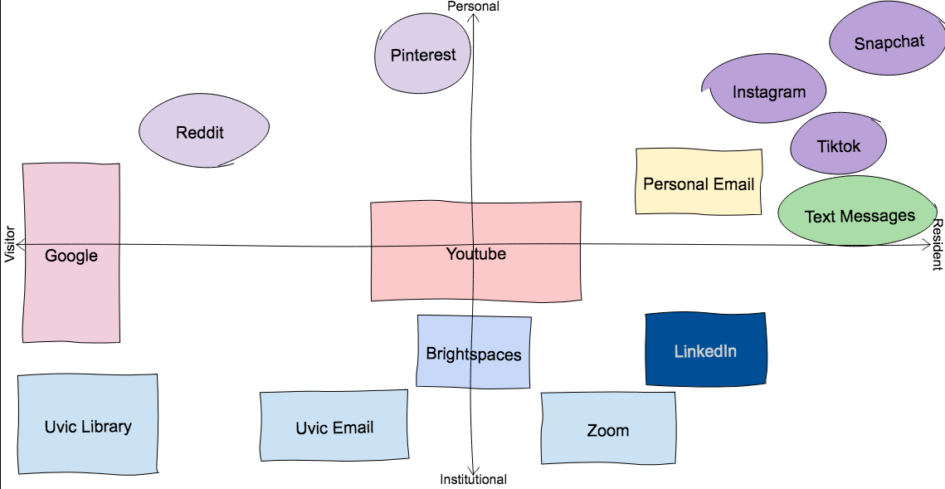For my first showcase post, I will be expanding on my week 3 wow and wonder, where I will further investigate the theory of connectivism.
In the past, information development was very slow and the life of knowledge could be measured in decades. However today, knowledge is growing at extremely high rates and is doubling every eighteen months, where the amount of knowledge is measured by months and years. Compared to the past, learning today can now be personalized to an individual’s wants and needs. We have gained access to various learning outlets that allow us to be able to learn from wherever we are. Recognizing and choosing relevant information is key to our learning development within a digital era. Connectivism points to how important our connections are, and how having these connections is the root of how we gain our knowledge. In Siemens article, he had a quote from Karen Stephenson, which I thought had highlighted a strong understanding of connectivism: “Since we cannot experience everything, other people’s experiences, and hence other people, become the surrogate for knowledge.” I believe that this makes a great point of how our learning is highly dependable on others and the connections we make.
Where we learn is also of high value when considering connectivism. By having so many resources available to us with the advancements of technology, learning becomes easily accessible through various platforms, such as Youtube, Reddit, TikTok, and so much more. It is important for individuals to connect and gain perspectives from people all over the world to expand their learning networks. Connectivism allows communities to be built where individuals can come together, collaborate, and learn from each other’s opinions and viewpoints (Connectivism Learning Theory, 2021). My classmate, Cassie Ma, made a point in her wow and wonder post that learning and work may not be separated. The first thing to come to mind for me was the platform LinkedIn, which would be an example of how connectivism applies to the workplace. LinkedIn allows people to connect and network with each other, as well as gain guidance from individuals all over the world who have specific work experience.
Social media, in general, is of high importance when considering connectivism and how we learn because we are able to connect with an innumerable amount of people, which exposes us to great amounts of knowledge. Social media has impacted the lives of so many around the world ranging from various demographics. This leads me to a question risen by my classmate, Mary Pesado, on how much of a challenge it is for older generations to grasp and apply the concept of networking and what kind of barriers do older adults face when it comes to leveraging the internet for their own learning and benefits. I think it is fair to wonder this, as social media generally caters to people of younger generations, however, I immediately thought of my grandma. My grandma has embraced the internet and loves to interact with people through social media. I have seen her use her Ipad to watch youtube videos and check up on her Facebook to stay connected with loved ones, as well as to stay up to date with current news. I’m sure there are a lot of older people who choose not to involve themselves with this type of media, but I do think it is really great of those who have adapted to technological advancements to learn and be connected with society.
When reflecting on how my knowledge has developed, with regard to connectivism, I believe that social media has been a key factor in my learning. Having access to so much information and learning from others’ experiences has definitely shaped the way I behave and perceive certain things. Also, as someone who is a visual learner, platforms like TikTok and Youtube have been really helpful in how I receive and process information. I made note of how in today’s time, learning is very personalized to our wants and needs, which directly connects to social media platforms as they allow us to make choices on what type of content we want to see to suit our personal learning networks. Overall, the connectivism theory highlights how our learning development has become so dependent on social platforms and that today we require the knowledge and experiences of others to learn from in order to flourish in this digital era.
References
Siemens, G. (2005). Connectivism: A Learning Theory for the Digital Age. International Journal of Instructional Technology and Distance Learning, 2(1).
Connectivism Learning Theory. (2021). Retrieved 17 February 2022, from https://www.wgu.edu/blog/connectivism-learning-theory2105.html#close


